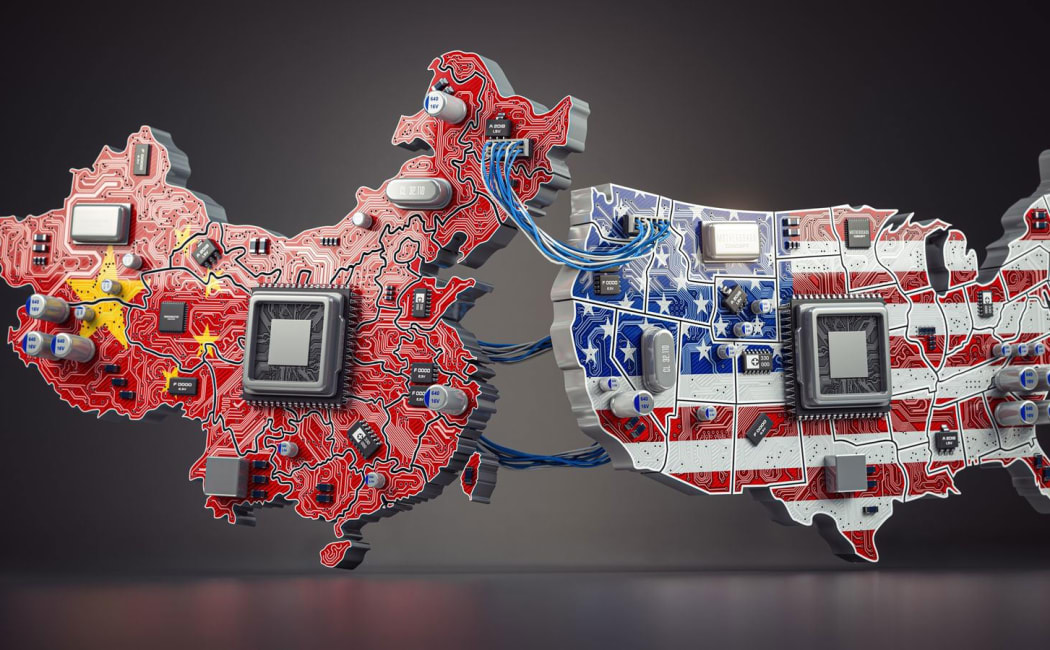China’s Rare Earth Restrictions Escalate U.S. Trade War to New Heights

China’s Rare Earth Restrictions Escalate U.S. Trade War to New Heights
Date: October 13, 2025 | Reading Time: 6 min
In a bold and unexpected move, China has introduced new restrictions on rare earth exports, setting the stage for a renewed U.S.–China trade war. This development has prompted Donald Trump to respond with a threat of imposing 100% tariffs on Chinese goods starting November 1. As global supply chains brace for impact, this escalating trade dispute may reshape the landscape of international commerce.
A Trade Truce Shattered by Strategic Resource Control
After months of negotiation that had hinted at easing tensions between the world’s two largest economies, Beijing’s announcement on rare earth export controls has pushed relations back to square one. These materials are essential in industries such as semiconductors, defense, renewable energy, and high-performance electronics — making this move a strategic blow in the ongoing tariff war.
The Chinese Ministry of Commerce stated that these measures aim to protect national interests and stabilize supply chains, while Washington views them as a direct attempt to gain leverage in trade talks. Trump, clearly unsettled, labeled the decision “shocking and unexpected,” signaling that tougher retaliatory steps may follow.
Rare Earths: A Strategic Weapon in Global Trade
Rare earth elements are crucial components in green technologies, electric vehicles, smartphones, and advanced defense systems. China currently controls nearly 70% of global rare earth production and a significant portion of refining capacity, giving it a powerful tool in global economic negotiations.
Under the new rules, companies will need official export licenses to ship even small amounts of materials containing rare earth elements or lithium battery components. This includes goods produced abroad using Chinese extraction or processing technology — effectively extending China’s control beyond its borders.
This approach mirrors U.S. technology export restrictions, where American regulations apply extraterritorially to products that contain U.S. technology. Experts believe China’s move is a calculated response to years of U.S. measures targeting its tech and manufacturing sectors.
Trump Responds with Tariff Threats
In response, Trump announced plans to impose an additional 100% tariff on Chinese imports starting November 1. This comes as negotiations were expected to progress at the upcoming meeting between Trump and Xi Jinping in South Korea later this month.
“China has made a move that no one expected,” Trump told reporters. “If they want a trade war, the United States is ready to win it.”
Although the U.S. President briefly softened his tone on social media, the underlying message remained clear — Washington is prepared to counter aggressively if Beijing continues down this path.
A Potential Economic Ripple Effect
Economists warn that this renewed confrontation could significantly affect global markets. Rare earth elements are indispensable in the production of chips, advanced sensors, renewable energy infrastructure, and defense technologies. A shortage or export slowdown could push prices higher and disrupt production across multiple industries.
Within hours of the announcement, the S&P 500 plunged over 2%, marking its steepest decline since April. This underscores how deeply intertwined China’s rare earth supply is with international commerce.
The Larger Strategic Game
For China, these restrictions are more than just an economic maneuver; they’re a demonstration of geopolitical strength. With the U.S. controlling semiconductor technology and China dominating rare earth resources, both nations now hold critical levers in the global supply chain.
Analysts suggest that this move gives Beijing additional bargaining power ahead of high-level meetings. If Washington moves forward with tariffs, Beijing may respond with further measures, escalating the conflict beyond trade into areas like cybersecurity, investment, and technological cooperation.
Impact Beyond the U.S. and China
The implications of these export restrictions reach far beyond U.S.–China relations. Countries dependent on Chinese rare earth elements — including major economies in Europe and Asia — could face supply shortages, forcing them to rethink sourcing strategies and diversify suppliers.
For tech giants and manufacturers worldwide, this may mean delayed production timelines, increased costs, and renewed urgency to invest in domestic or alternative rare earth sources.
A Showdown Before Global Summits
The timing of Beijing’s decision is also strategic. It comes just weeks before the Asia-Pacific Economic Cooperation (APEC) summit, where Trump and Xi are expected to meet face-to-face. If tensions remain high, this summit could become a crucial turning point in shaping the future of trade relations between the two superpowers.
Washington insiders believe Trump may use the APEC stage to rally allies and pressure Beijing to reverse course, while China could leverage its control over rare earths to extract concessions.
A Familiar but Higher-Stakes Conflict
This isn’t the first time China has used its dominance in rare earth elements as leverage in a trade conflict. During earlier rounds of the tariff war, similar tactics forced temporary tariff pauses and drew global attention to the vulnerability of critical supply chains.
But unlike past confrontations, the stakes are now higher. As global dependence on rare earths grows — particularly in the race for clean energy and advanced technology — this dispute could have ripple effects on everything from EV production to national security.
Conclusion: A Global Economy on Edge
The unfolding standoff between China and the United States over rare earth exports is more than a trade spat — it’s a struggle over control of the resources that power modern economies. As the November tariff deadline looms, the world watches closely, knowing that what happens next could reshape the future of global trade and technology.
Whether the two nations find a diplomatic off-ramp or march toward a full-blown trade war remains uncertain. What’s clear is that rare earths have become a critical battleground in the race for economic and technological dominance.
